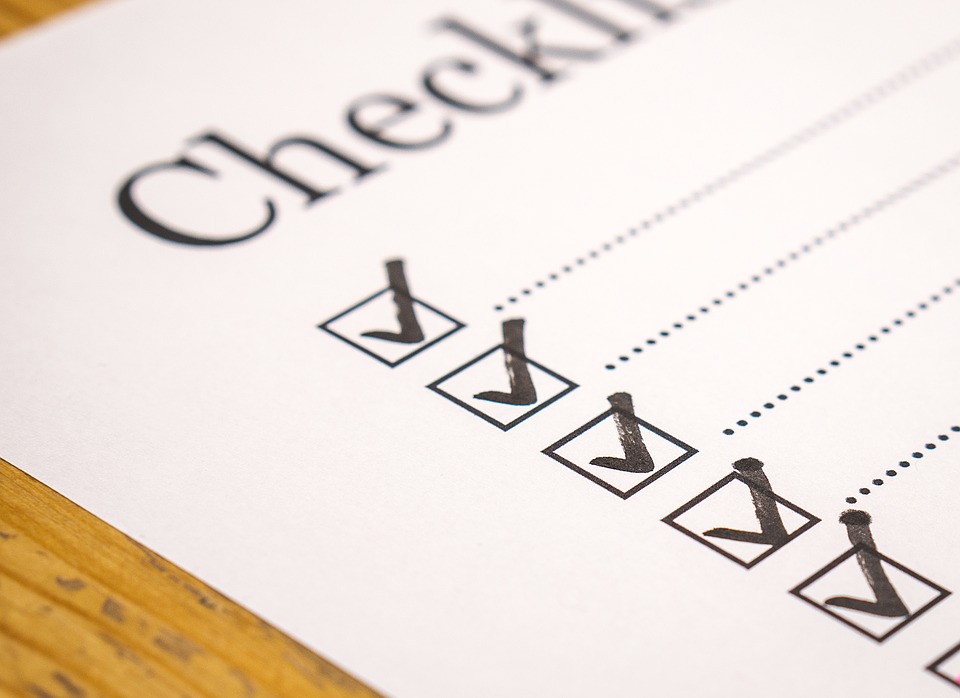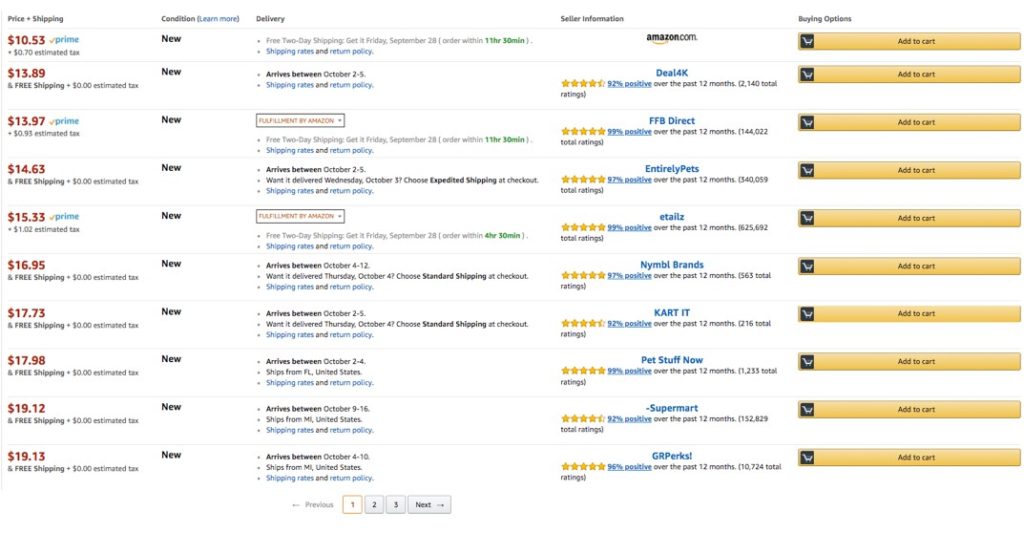12 Reasons Why Your Amazon Sales are Down and What You Can Do About It

If you’ve noticed decreasing Amazon sales, follow this check-list to identify the issues and regain sales:
- Are your Amazon listings active?
If you see the “dog” image below when attempting to find your listing, that means it’s inactive. There are multiple reasons why Amazon will deactivate a listing, including anything from too many complaints about a product to inventory being stranded. Be sure to monitor your listings on a regular basis. It may be helpful to specifically look at listings where sales drop significantly or go to zero.

- Do you have unauthorized sellers on your listings?
If you are a brand owner or manufacturer and you do not control your Amazon distribution channel, other sellers who get ahold of your products will attach to your listings and steal the Buy Box from you. This means they’ll be making sales driven by your marketing efforts while you start losing revenue. Unauthorized sellers offering low prices on Amazon triggers price-matching by your retailers and other authorized resellers online, which can hurt your pricing across all channels. If your listing has unauthorized sellers undercutting your MAP, like the listing shown below, it will eventually negatively impact your business. Controlling your Amazon distribution channel and putting agreements in place with distributors, prohibiting them from selling your products on Amazon, is hyper-critical to the success of your business across all channels.

- Are unauthorized sellers shipping your customers counterfeit products?
Popular products often have Counterfeit Sellers taking advantage of your momentum and marketing efforts. Many of these counterfeit sellers will attach to your listings, and either ship product to customers from China or even use Amazon to ship the products (FBA). Counterfeits are a difficult and time-consuming problem to combat. You can place test orders and submit complaints to Amazon once you have proof that the product is inauthentic, but this is expensive, and you continue to lose sales while waiting for products to arrive. The best way to combat counterfeits is to participate in the Amazon Brand Registry and Amazon Transparency programs. We have seen excellent results from these programs, but both require expertise to maximize the benefits.
- Do you have duplicate listings on Amazon?
When unauthorized and counterfeit sellers get kicked off your listings, some of the “smart” ones create a duplicate listing for your product using an alternate UPC. If they are using your Trademark or Copyright, you can submit violations to have these duplicate listings removed through the Amazon Brand Registry program. Having Patents to protect your products also helps.
- Are you out of inventory?
Tanking sales often means you’ve run out of inventory. It is important to regularly keep an eye on your sell-through rate and inventory levels. We recommend monitoring this at least once or twice a week, maybe more, depending on the popularity of your product. Inventory projection models can help in predicting how long your available inventory will last.
- How are you fulfilling orders?
Did you know that sellers who use Amazon FBA (PRIME) see 30-40% higher sales than sellers fulfilling products through their own warehouse? This is because over 100 Million PRIME members prefer to purchase products that are PRIME eligible. Some sellers create duplicate SKUs on the same listing to offer products via seller-fulfillment if their FBA inventory runs out. If you do this and you notice a dip in sales, it may be because your seller-fulfilled listing now has the buy box. While we do recommend using seller-fulfillment as a back-up when possible to eliminate losing 100% of sales, you will still see a drop without that PRIME designation.
- Are your listings SEO optimized?
If your listing content isn’t search-engine-optimized (SEO), it impacts where your listing appears in the Amazon organic search. Every time you update the headline, bullets, description, or Enhanced Brand Content in your listing make sure it includes the most relevant SEO keywords for your product. Many third-party tools are available online to assist you in optimizing your listings for the Amazon search.
- Has your off-Amazon media spending decreased?
Sales trends will often fall in line with your media spending, so when your spending decreases, so does your revenue. If you’re promoting your products via social media, digital, TV, or radio advertising, check with your media agency to make sure ads are still running, and increase Amazon sponsored ad spend when appropriate to boost sales.
- How are your Amazon Sponsored and Headline Ads performing?
If you’re not running sponsored ads on Amazon, you should be! If you are and you’ve noticed a decrease in sales, review your campaigns for profitability. Also review keyword bids and make necessary updates daily to ensure you are maximizing ROI. If you notice that your campaigns have suddenly stopped, make sure the credit card associated with your advertising account is still valid and that you have available funds to continue running your ads.
- Is your Amazon Storefront active?
If you have a Brand Storefront on Amazon (one benefit of being enrolled in the Amazon Brand Registry), check that it’s still active. If Amazon has shut down your Storefront, you may need to resubmit it for review. Once active, be sure to connect your Headline Ads to your Amazon Storefront to increase your brand’s visibility on Amazon.
- Do you have Buy Box on your Listings?
Having the Buy Box is crucial for Amazon sales. If other sellers are offering your products at lower prices, they are stealing the buy box as well as your sales. Sometimes Amazon may suppress the buy box, which affects how your listing shows up in the organic search and requires an extra click for purchasing. Multiple sellers, a sudden large increase in your price, or changes to Amazon’s algorithm can cause the buy box to be suppressed.
- Do your products have favorable Amazon reviews?
Many buyers look at reviews before they buy the product, so it’s important to do whatever you can to maintain a high star rating. There are many third-party tools out there to help you monitor reviews but responding to negative reviews requires a dedicated effort. Although you cannot ask a buyer to change their review, many buyers will do so on their own if you provide them with excellent customer service such as offering to replace a defective product for free.
Don’t wait until you see decreased sales to monitor these important items. Review this checklist regularly to keep your Amazon account running smoothly and sales on track!

